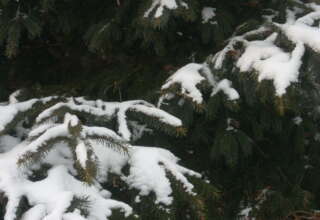
Leader As Servant
We find a parallel analysis to Teilhard’s and Eisler’s notions of leader as lover and partner in Robert Greenleaf’s description of leader as servant:vi
A fresh critical look is being taken at the issues of power and authority, and people are beginning to learn, however haltingly, to relate to one another in less coercive and more creatively supporting ways. A new moral principle is emerging which holds that the only authority deserving one’s allegiance is that which is freely and knowingly granted by the led to the leader in response to, and in proportion to, the clearly evident servant stature of the leader. Those who choose to follow this principle will not casually accept the authority of existing institutions. RATHER, THEY WILL FREELY RESPOND ONLY TO INDIVIDUALS WHO ARE CHOSEN AS LEADERS BECAUSE THEY ARE PROVEN AND TRUSTED AS SERVANTS. To the extent that this principle prevails in the future, the only truly viable institutions will be those that are predominantly servant-led.
Teilhard, Eisler and Greenleaf all offer encouraging and inspiring models of leadership. One may be inclined, however, to dismiss these portrayals as hopelessly out of date or out of touch with reality. A similar critique is often drawn with regard to many of the other appreciative approaches to organizational life. Yet all three visionaries, Teilhard, Eisler and Greenleaf, speak to the necessity for making this shift in leadership, given the critical condition of many 21st Century organizations.
Furthermore, there is ample evidence all around us in our natural world that suggest the abundance of love, partnership and servanthood. According to Teilhard: “. . .[if] a universal love is impossible, how can we account for the irresistible instinct in our hearts which leads us towards unity whenever and in whatever direction our passions are stirred: A sense of the universe, a sense of the all, the nostalgia which seizes us when confronted by nature, beauty, music—these seem to be an expectation and awareness of a Great Presence.”vii
_______________________
i Teilhard de Chardin. The Phenomenon of Man. New York: HarperCollins, 1953, p. 264.
ii Teilhard de Chardin. The Phenomenon of Man. New York: HarperCollins, 1955, p. 265.
iii Riane Eisler. The Chalice and The Blade. San Francisco: Harper San Francisco, 1987.
ivRiane Eisler. The Chalice and The Blade. San Francisco: Harper San Francisco, 1987.
v David Loye and RianeEisler. “Chaos and Transformation: Implications of Nonequilibrium Theory for Social Science and Society,” Behavioral Science, 1987, 32, p. 63.
vi Robert Greenleaf. Leader as Servant. Peterborough, New Hampshire: Windy Row Press, 1970, pp. 3-4.
vii Teilhard de Chardin. The Phenomenon of Man. New York: HarperCollins, 1955, p. 266.
viii Teilhard de Chardin. The Phenomenon of Man. New York: HarperCollins, 1953, p. 264.
ix Teilhard de Chardin. The Phenomenon of Man. New York: HarperCollins, 1955, p. 265.
x Riane Eisler. The Chalice and The Blade. San Francisco: Harper San Francisco, 1987.
xiRiane Eisler. The Chalice and The Blade. San Francisco: Harper San Francisco, 1987.
xii David Loye and RianeEisler. “Chaos and Transformation: Implications of Nonequilibrium Theory for Social Science and Society,” Behavioral Science, 1987, 32, p. 63.
xiii Robert Greenleaf. Leader as Servant. Peterborough, New Hampshire: Windy Row Press, 1970, pp. 3-4.
xiv Teilhard de Chardin. The Phenomenon of Man. New York: HarperCollins, 1955, p. 266.
—————
————————————————————
—————
————————————————————
2








